I was struggling with this for a while too until I saw this helpful post that shares some example codes. I understood in theory that you can get the new frame using OpenCV's warpPerspective function if you have the homography matrix. Since you have the exact translation and rotation values, you can derive the matrix yourself given the camera's intrinsic parameters. However it wasn't until I tried out with codes myself that I fully see how it's done.
We know that for a 3D point in space to a 2D image projection the homography matrix is given by
H = K[R|T]
To transform the points from one 2D image to another you simply have to inverse project the points to 3D first and then reproject them to the new image plane.
x’ = K * [R2|T2] * [R1|T1](inv) * K(inv) * x
The [R2|T2] * [R1|T1](inv) equates to a single transformation matrix that gives the relative transformation from one camera pose to another. All the matrices are shaped as 4x4 by appending with [0, 0, 0, 1] wherever needed.
Here's some sample codes which are adapted from the codes from the same post.
import cv2
import numpy as np
f = 500
rotXval = 90
rotYval = 90
rotZval = 90
distXval = 500
distYval = 500
distZval = 500
def onFchange(val):
global f
f = val
def onRotXChange(val):
global rotXval
rotXval = val
def onRotYChange(val):
global rotYval
rotYval = val
def onRotZChange(val):
global rotZval
rotZval = val
def onDistXChange(val):
global distXval
distXval = val
def onDistYChange(val):
global distYval
distYval = val
def onDistZChange(val):
global distZval
distZval = val
if __name__ == '__main__':
#Read input image, and create output image
src = cv2.imread('test.jpg')
src = cv2.resize(src,(640,480))
dst = np.zeros_like(src)
h, w = src.shape[:2]
#Create user interface with trackbars that will allow to modify the parameters of the transformation
wndname1 = "Source:"
wndname2 = "WarpPerspective: "
cv2.namedWindow(wndname1, 1)
cv2.namedWindow(wndname2, 1)
cv2.createTrackbar("f", wndname2, f, 1000, onFchange)
cv2.createTrackbar("Rotation X", wndname2, rotXval, 180, onRotXChange)
cv2.createTrackbar("Rotation Y", wndname2, rotYval, 180, onRotYChange)
cv2.createTrackbar("Rotation Z", wndname2, rotZval, 180, onRotZChange)
cv2.createTrackbar("Distance X", wndname2, distXval, 1000, onDistXChange)
cv2.createTrackbar("Distance Y", wndname2, distYval, 1000, onDistYChange)
cv2.createTrackbar("Distance Z", wndname2, distZval, 1000, onDistZChange)
#Show original image
cv2.imshow(wndname1, src)
k = -1
while k != 27:
if f <= 0: f = 1
rotX = (rotXval - 90)*np.pi/180
rotY = (rotYval - 90)*np.pi/180
rotZ = (rotZval - 90)*np.pi/180
distX = distXval - 500
distY = distYval - 500
distZ = distZval - 500
# Camera intrinsic matrix
K = np.array([[f, 0, w/2, 0],
[0, f, h/2, 0],
[0, 0, 1, 0]])
# K inverse
Kinv = np.zeros((4,3))
Kinv[:3,:3] = np.linalg.inv(K[:3,:3])*f
Kinv[-1,:] = [0, 0, 1]
# Rotation matrices around the X,Y,Z axis
RX = np.array([[1, 0, 0, 0],
[0,np.cos(rotX),-np.sin(rotX), 0],
[0,np.sin(rotX),np.cos(rotX) , 0],
[0, 0, 0, 1]])
RY = np.array([[ np.cos(rotY), 0, np.sin(rotY), 0],
[ 0, 1, 0, 0],
[ -np.sin(rotY), 0, np.cos(rotY), 0],
[ 0, 0, 0, 1]])
RZ = np.array([[ np.cos(rotZ), -np.sin(rotZ), 0, 0],
[ np.sin(rotZ), np.cos(rotZ), 0, 0],
[ 0, 0, 1, 0],
[ 0, 0, 0, 1]])
# Composed rotation matrix with (RX,RY,RZ)
R = np.linalg.multi_dot([ RX , RY , RZ ])
# Translation matrix
T = np.array([[1,0,0,distX],
[0,1,0,distY],
[0,0,1,distZ],
[0,0,0,1]])
# Overall homography matrix
H = np.linalg.multi_dot([K, R, T, Kinv])
# Apply matrix transformation
cv2.warpPerspective(src, H, (w, h), dst, cv2.INTER_NEAREST, cv2.BORDER_CONSTANT, 0)
# Show the image
cv2.imshow(wndname2, dst)
k = cv2.waitKey(1)

